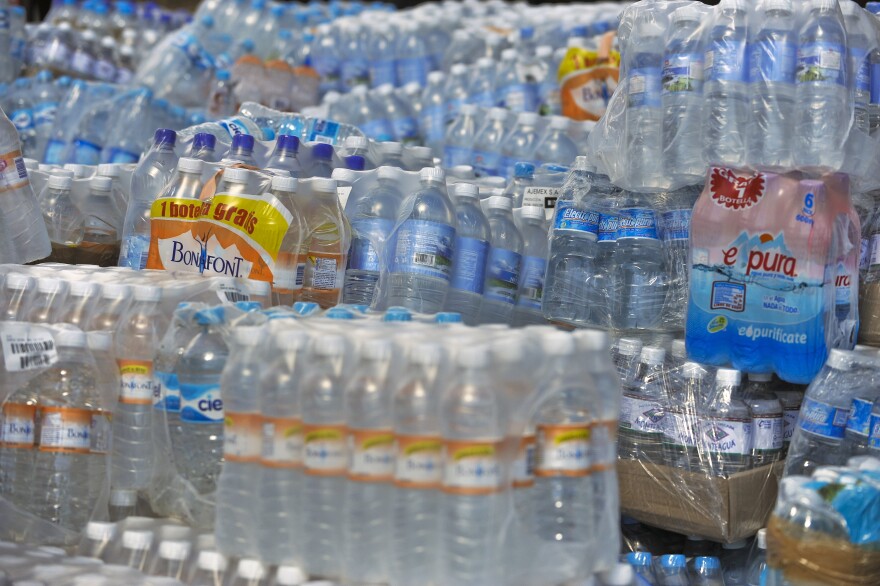Take Two translates the day’s headlines for Southern California, making sense of the news and cultural events that affect our lives. Produced by Southern California Public Radio and broadcast from October 2012 – June 2021. Hosted by A Martinez.
The bottled water industry and California's drought

Some California communities are keeping a closer eye on where their water comes from and where it goes. One concern is bottled water, but officials say the amount of water that is used for that is small.
"The entire U.S. bottled water market is about 10 billion gallons [per year], and Los Angeles goes through that amount of tap water in less than three weeks," says Chris Hogan, spokesman for the International Bottled Water Association.
In California, it is estimated 1 to 2 percent of all the municipal and industrial/non-agricultural water is used for drinking, KPCC's Brian Watt reports.
"So when we’re talking bottled water, we’re talking about a really small, tiny percentage of the overall water used in California, even for municipal and industrial purposes," says Jeff Davis, general manager of the San Gorgonio Pass Water Agency.
A majority of state water, about 80 percent, is funneled to California’s well-known water hog: agriculture, according to the Oakland-based Pacific Institute.
But, in Riverside County's city of Cabazon, officials are concerned with every drop of water that leaves the city.
"I’m the guardian of the water resources in this community, and I’m concerned about people 'pulling' or putting straws in our aquifer and pumping water," says Calvin Louie, general manager of the Cabazon Water District. But, "we need to be responsible."
Read the full story: Drought: Is the bottled industry shrinking California's water supply?


